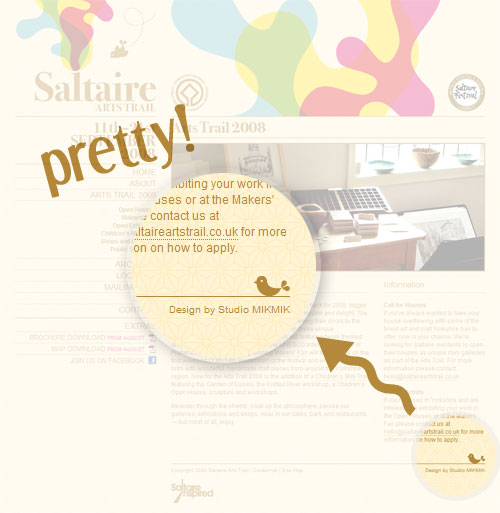A “website designed by…” link is like a Louis Vuitton monogram. It’s your brand. Let your clients wear it on their websites as proudly they would with a designer handbag.
Is this always true? What makes this practice highly recommended or downright tacky?
It depends. It always does.
Your brand should never hurt your creations, it should enhance them
I bumped into this post: You Will Never See “Designed by Atrick Design”. I totally respect everything he wrote there. And I am not going to say I am completely against it. In fact, I have avoided placing links, logos, and attribution for things I’ve done in the past. But some things struck me.
In Pat Dryburgh’s post, he points this out:
I will never let a “designed by” link do my marketing. I wouldn’t want to take that away from my clients.
A link does not have to be your only way of marketing. You can always do it at the same time you’re promoting yourself in the real world.
But what does that link take away from your clients? Why does does this awful perception exist? If you’re a good designer, (1) you will find a way to place your link so that it fits nicely into the design; and (2) visitors will consider it either convenient or eye candy.
As a web designer, you should practice what you preach
Convenient, because why waste time contacting the owner of the website to ask who designed it if the answer is just a click away?
If you do choose to do it the hard way, nobody’s stopping you. Don’t make that choice for the visitor. Isn’t designing an interface about making it easier for the user to do what he wants?
Clients are a great source for new work, but so are websites. As a web designer you’re supposed to promote that belief. Why not practice it as well?
A “website designed by…” link is like a Louis Vuitton monogram
Eye candy, because it all boils down to the psychology of branding. In fashion, the logos, emblems, patterns, and other symbols that represent designer brands are proudly displayed on the product because that is what the consumer desires. More so than the features of the product itself. The consumer desires the aura of sophistication and quality that the brand carries as its reputation.
How did Louis Vuitton gain such status? More than eye candy, his products were a success. I’m not going to tell you how to create successful web designs here, but we all know that if a product is successful, people who go out and buy it don’t mind having the mark of the brand on display!
Focus on making your work a success, and people won’t mind having your name stamped on it. It’s as simple as that.
Brand vs. Brand
Or is it?
I said our perception needs to change because it seems difficult to bring the phenomenon with luxury brands to the Web. Is it because web designers will never achieve the rockstardom of fashion designers? What about architects? Graphic designers? Are web designers really so different?
When does it become appropriate for a designer to leave his own mark? When designing for products that do not belong to someone else, it would be like trespassing, or a struggle between the true designer of the product and the company that outsourced the designing of that product. You wouldn’t expect a secondary logo in addition to Apple’s on the iPod. In this case, it does not matter whether you can find a way to tastefully incorporate your own logo for eye candy or convenience; you’d be potentially competing with the product itself.
Time to Choose
I’ve raised several different arguments here, but it’s up to you what to believe in. Pat does not believe linking back is a valid enough reason, but for web designers also who provide SEO services might think otherwise. Some of you could agree that web designers are a lot like fashion designers or graphic designers, but the web crowd may never in a million years see why.
If your client goes out of his way to ask you to put your name on it, ask yourself what’s stopping you from doing so.
Take into account your opinion, and other people’s opinions, and then decide.
Originally posted on June 3, 2008 @ 6:45 am
